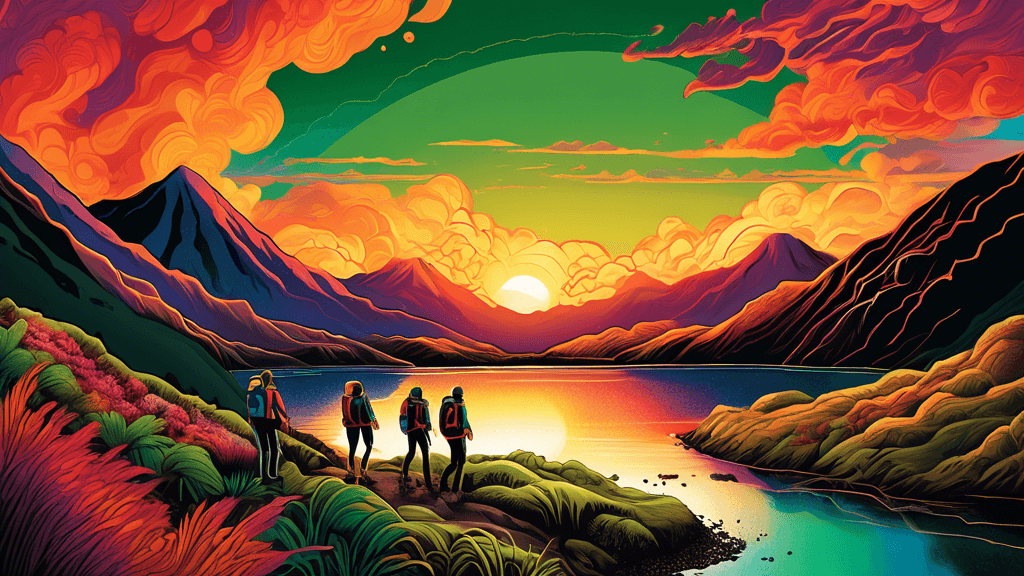
Exploring New Zealand's Dynamic Volcanic Landscapes
Share
Unveiling the Beauty and Challenge of New Zealand's Volcanic Landscapes
New Zealand is a land of extraordinary natural beauty, where the dynamic forces of nature are seen in their fullest splendor. One of the most striking features of its topography is its vast array of volcanic landscapes that offer a unique blend of awe-inspiring scenery and significant scientific interest. But what makes these volcanic features so fascinating, and why are they important both ecologically and culturally?
Understanding the Formation of New Zealand’s Volcanoes
New Zealand sits on the Pacific Ring of Fire, a hotbed of volcanic and seismic activity. This geographical positioning is primarily responsible for the numerous active, dormant, and extinct volcanoes dotting the landscape. The North Island, in particular, hosts the most prominent volcanic landscapes, including the Taupo Volcanic Zone and the Auckland Volcanic Field.
The Rich Tapestry of New Zealand's Volcanic Zones
The Taupo Volcanic Zone, stretching from Mount Ruapehu to White Island, encompasses some of the country's most famous volcanic landscapes. This zone is known for its frequent and sometimes very explosive volcanic activity. Here's how some of these areas stand out:
- Mount Ruapehu: As the largest active volcano in New Zealand, Mount Ruapehu is a popular spot for skiing and snowboarding in winter, and hiking in summer. Its last major eruption in 1996 signifies its continuous active status.
- Tongariro National Park: This area is not only a UNESCO World Heritage site but also a place of deep spiritual significance for the Maori people. The alpine, volcanic scenery captivates thousands of tourists yearly, particularly the Tongariro Alpine Crossing, noted as one of the best one-day hikes worldwide.
- White Island: Also known as Whakaari, White Island is New Zealand’s most active cone volcano, famous for its accessible volcanic activity, with visitors able to walk right up to the crater rim.
Impact and Importance of Volcanic Landscapes in New Zealand
While the visual allure of New Zealand's volcanic regions is undeniable, these landscapes also play a crucial role in the ecological and cultural fabric of the country. Ecologically, the volcanic soils support a diverse array of flora and fauna, adapted to thrive in these harsh conditions. Culturally, these landscapes are considered tapu (sacred) by Maori, with many sites being significant in Maori mythology and history.
Volcanoes are not only natural landmarks but are pivotal in the cultural narratives and environmental sustenance of the region, explains Dr. Lucy Green, a volcanologist at the University of Auckland. They remind us of our planet’s incredible power and how it continues to shape our world.
Challenges Posposed by Volcanic Zones
Despite their beauty, the volcanic regions of New Zealand are not without their hazards. The ever-present risk of volcanic eructions poses significant challenges for disaster management and local communities. For instance, the eruption of Mount Tongariro in 2012 prompted immediate evacuations and raised questions about preparedness for future volcanic activities.
Experiencing New Zealand's Volcanic Landscapes Safely
For those looking to experience these raw and powerful landscapes, safety comes first. Adhering to local guidelines, respecting Maori customs and traditions, and staying informed about current volcanic activity are all essential steps for both protecting oneself and preserving these incredible features.
Conclusion: A Call to Explore and Protect
New Zealand’s volcanic landscapes offer unique windows into the Earth’s geologic power. For photographers, artists, and nature lovers, these landscapes provide endless inspiration. However, as we venture into these magnificent areas, let us remember the importance of conservation and respect for cultural practices. By being informed and considerate travelers, we can help ensure that these natural wonders are preserved for future generations. So, have you packed your bags yet? Are you ready to explore the dynamic beauty of New Zealand’s volcanoes, all while contributing to their preservation?





